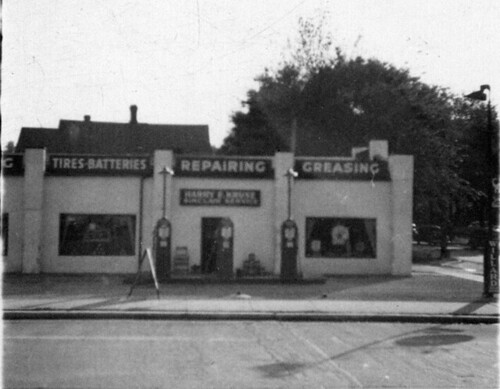 Des Plaines has often tried making large-scale downtown redevelopment plans. This one might have been the first.
Des Plaines has often tried making large-scale downtown redevelopment plans. This one might have been the first.In 1926, Des Plaines was growing in a big way. Northwest Highway had just been made into a highway from a string of segments and was fully paved, connecting Chicago to Barrington and later Crystal Lake. Mannheim Road was being paved, and River Road had been paved not long ago. Add in the railroad tracks, and downtown Des Plaines had really become a hub of activity. Rand Road was on its way; these were the interstates of their time. The village government had just given way to a city, and Riverview was annexed. So it's no surprise that downtown went through a major growth spurt: within a few years, the Masonic Temple, First Congregational Church, Des Plaines Theater, Echo Theater, and Des Plaines State Bank buildings, some of the best structures downtown, were all built.
But one wasn't, and it might be considered the grandfather of the Des Plaines Mall and Metroplitan Square, two big shopping projects that went through a series of revisions before being built and struggling.
A few months after construction started on the Des Plaines State Bank building, the Chicago Tribune reported on plans by the Bank building's architects, Wolf, Sexton, Harper, and Trueax, for a new building on the site of the Des Plaines Lumber and Coal company, which was then located along the train tracks, where the block of Ellinwood between Lee and Graceland is now.
The plans for the Arcade, a building that wouldn't look out of place in Lake Forest or Oak Park, called for a 200 foot long building with a series of thirteen stores along the Ellinwood side. The second floor would have had a large restaurant. The Arcade would have been a Mission Revival styled building, with stucco walls, a red tile roof, and green trim, and would have been landscaped with grass plots, fountains, and planters. It would have cost $80,000 at the time.
Had this building been built, downtown Des Plaines might have looked much different today. It would have cememnted the Spanish look established by the Bank and Des Plaines Theater, and the diamond pattern on the Masonic Temple brickwork. Such a building would have made a big impact and shifted the center of downtown; if popular, it might have kept enough business going downtown to make a Des Plaines Mall never necessary. It may not have been built due to a lawsuit that sought to keep Ellinwood from being opened; Ellinwood wasn't opened until 1930, at which point financing would have been impossible due to the depression. Instead, Ellinwood Street was opened and the buildings along it were built years later, in the 1930s through 1950s, buildings that aren't particularly attractive or productive. The Arcade is a landmark that never was.
The site remained empty through the 1930s, except for the Oriental Cleaners and a gas station. Here's what was ultimately built there. These buildings still stand, though a few have been modified. For example, the two-story building had windows cut into the upper floor, and the Jewel has been painted black for Naked Furniture, then white again.





Its always interesting to read where we've been and where we are now. Those early planners and builders had creative vision.
ReplyDeleteI live in Plew's home. I am the third owner of this 90 year old home. I have enjoyed the publicity of this builder and his legacy. The tombstone unearthed in the back yard is still on display at the historical society.
Anyone with photos of this home please contact me. I could love a copy. Especially of the inside!
1072 Jeannette
Des Plaines
708-373-0937
.